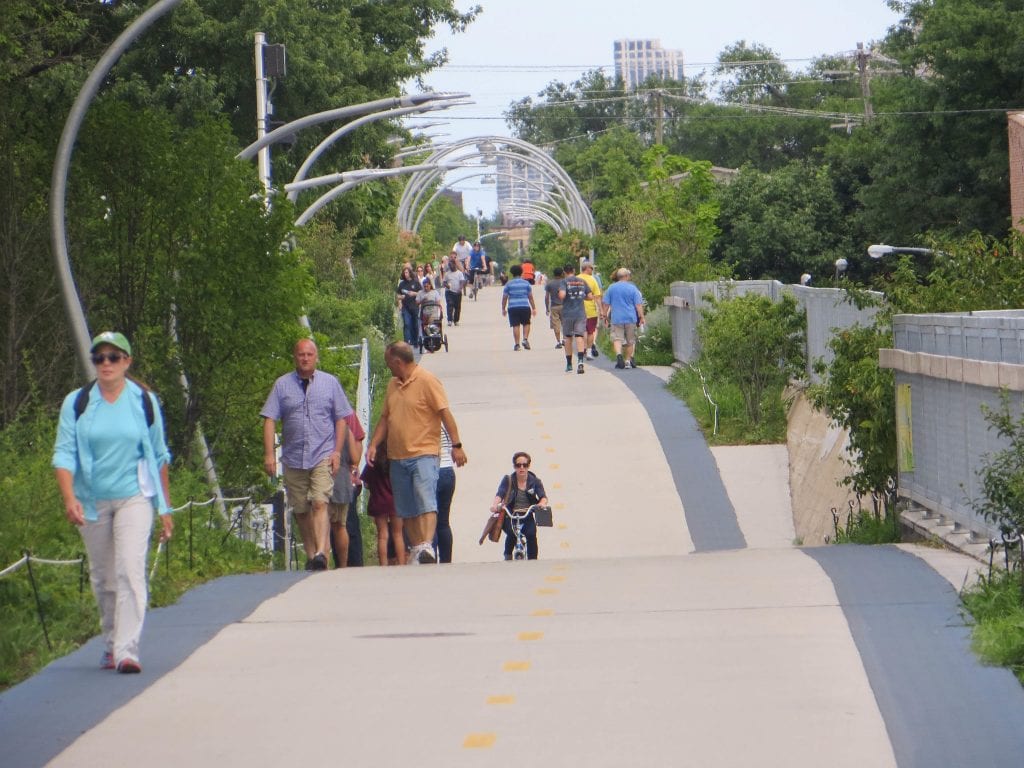
Chicago’s 606 trail, which many housing advocates say contributed to local green gentrification. Image by David Wilson via Flickr, CC BY 2.0
Parks are the backbone of a healthy neighborhood. They’re a space where people can gather, children can connect with and learn about nature, and families can engage in free, health-promoting activities.
But parks have also been historically used as tools for exclusion and racial segregation. The U.S. National Parks System was created specifically to steal land from Indigenous tribes. Seneca Village, one of the few neighborhoods in New York City where Black residents could own property (and therefore be eligible to vote), was demolished to make way for Central Park.
Despite their bucolic image, parks remain contested spaces, and tense encounters about who belongs in them often fall along racial and class lines, sometimes with tragic results. In 2014, Cleveland police shot and killed Tamir Rice, a 12-year-old Black boy who was playing in a park with a toy gun. More recently in New York City, a white woman named Amy Cooper feigned fear and threatened Christian Cooper, a Black bird-watcher who is not related to Amy Cooper, with police intervention after he asked her to leash her dog, per the rules of the park.
For low-income residents in Los Angeles, parks have become racialized symbols of “green gentrification” and displacement, where private yoga classes for wealthy white women are encouraged to take up public space while low-income primarily Latinx park vendors are ticketed and harassed. Green gentrification is a process in which cleaning up pollution or providing green amenities increases local property values and attracts wealthier residents to a previously polluted or disenfranchised neighborhood. This leads to landowners raising rents on the existing residents and businesses, eventually displacing them. Additionally, when higher-income folks move into an area, they often attempt to police the existing low-income residents engaging in activities like food vending or barbecues that—while legal and innocuous—are seen as unacceptable to the newer, wealthier residents. One notable example occurred several years ago in San Francisco when a conflict between several tech workers and local children at a neighborhood soccer field was captured on video. The tech workers had paid for a reservation of a soccer field, while lifelong residents had a system in place where groups would have to challenge the occupying group in a game to ‘win’ space. The tech employees yelled at the children to leave the field, even after the children offered to play them in a game. This was not an isolated incident, as similar confrontations are happening with homeless people and food vendors across the country, demonstrating that not everyone has equal access to these green amenities.
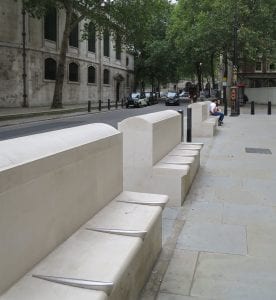
Instead of funding services to aid those experiencing homelessness, many localities have opted to install anti-homeless architecture in public spaces, such as this bench in the UK that inhibits people from lying down. Photo by Alan Stanton via flickr, CC0 1.0
New luxury developments tout their proximity to renovated parks in their marketing materials and incorporate hostile architecture features that block neighborhood access. In Los Angeles, as well as cities across the nation, new parks have become so synonymous with displacement and other negatives changes that residents and some tenants’ rights organizations have resisted park improvements altogether. One Los Angeles organization that was looking for support for a neighborhood park cleanup reportedly received substantial resistance by local residents who said, “You’re doing this for the new folks moving in, not for low-income people like us.”
But what if public parks could instead be reimagined as spaces that welcomed everyone and provided solutions to a broad range of community needs? That’s the vision behind the Los Angeles Regional Open Space and Affordable Housing Collaborative (LA ROSAH). In 2016, the Southeast Asian Community Alliance (SEACA), where I serve as executive director, brought together state park agencies with national and local affordable housing, tenants’ rights, and environmental organizations to form a collaborative organization that aims to create strategies that directly address green gentrification. The collaborative group is unfunded, and while certain organizations like SEACA help set up meetings and take care of logistics, there is no lead organization. Since its creation, the collaborative has produced a white paper that outlines a framework for the development of parks and affordable housing in the city, it has brought together affordable housing and park developers to collaborate on a number of new projects, and it has succeeded in adding more affordable housing goals into the LA River Master Plan, including a call for the establishment of an affordable housing land bank.
[RELATED: 7 Policies That Could Prevent Gentrification]
In 2019, LA ROSAH scored its first major legislative victory with the passage of the Displacement Avoidance Policy as part of the expenditure plan for Measure A, a countywide parcel tax for parks and open space. Measure A provides nearly $100 million a year in revenues for park projects across the county and includes a specific set-aside for projects in park-poor areas, some of which are currently experiencing rapid change and green gentrification.
Prior to the adoption of the expenditure plan, the tenants’ rights members of LA ROSAH met with the county’s Regional Parks and Open Space District (RPOSD), the agency tasked with managing Measure A funds, to discuss its concerns about green gentrification. While the RPOSD staffers shared the group’s concerns about green gentrification, they were at a loss for what a park agency with limited powers could do to address the issues.
LA ROSAH’s tenants’ rights and affordable housing members then went about developing a set of recommendations that were later vetted by volunteer members of the parks sector for suitability within the context of the park. In addition, LA ROSAH continued communicating with RPOSD and shared ideas, such as incorporating information provided by our tenants’ rights sector into efforts by our park outreach sector to encourage collaboration between the two, rather than present them with a full suite of solutions. This was a strategic decision to limit what we shared initially so as to not overwhelm them with new ideas but also to demonstrate that we recognized their limitations as a park agency and to show that we wanted to work with them to develop ideas that made sense for them. This approach created buy-in from RPOSD and even led to its staff proposing additional ideas that expanded the scope of our ideas.
The Displacement Avoidance Policy was the first of its kind in the country, and includes the following strategies:
- Incentivizes grant applicants to incorporate displacement avoidance strategies in their project applications and throughout the planning and implementation phases by providing additional points in the scoring criteria;
- Encourages park agencies and nonprofit park developers to collaborate with affordable-housing developers. Collaborations can include project design, connective infrastructure, outreach and community engagement, and site selection;
- Establishes a technical assistance program that could support project applicants to create and implement displacement avoidance strategies as a component of their projects;
- Creates the first-of-its-kind data collection and evaluation system to track the impacts of park investment over time, including potential effects on housing stability and displacement;
- Establishes a Displacement Avoidance Task Force, which would include housing rights organizations and affordable housing developers, academics, and county staffers to provide support and oversight to RPOSD in its efforts to implement the Displacement Avoidance Policy; and
- Allows Measure A funds to be used for relocation costs if the project results in the displacement of any person or business.
The precedent set by the Measure A Displacement Avoidance Policy paved the way for the adoption of a similar policy to be included in the expenditure plan for Measure W, a stormwater parcel tax that Los Angeles passed in November 2018. The Los Angeles County Board of Supervisors later decided to expand the displacement avoidance strategy to include two additional revenue measures, Measure M (transportation sales tax) and Measure H (housing and homelessness sales tax) in what collectively became known as the WHAM Motion. The combined WHAM measures generate around $1.6 B for housing, parks, stormwater, and transportation.
While all of this progress is exciting, there remains a significant amount of implementation work ahead. It includes short-term strategies, such as identifying department-specific strategies and addressing displacement, and longer-term solutions like developing coordinated acquisition and public investment strategies so that housing stability tools are deployed at the beginning of the development process for parks, transportation, and stormwater projects.
RELATED ARTICLE: What Does Gentrification Really Mean?

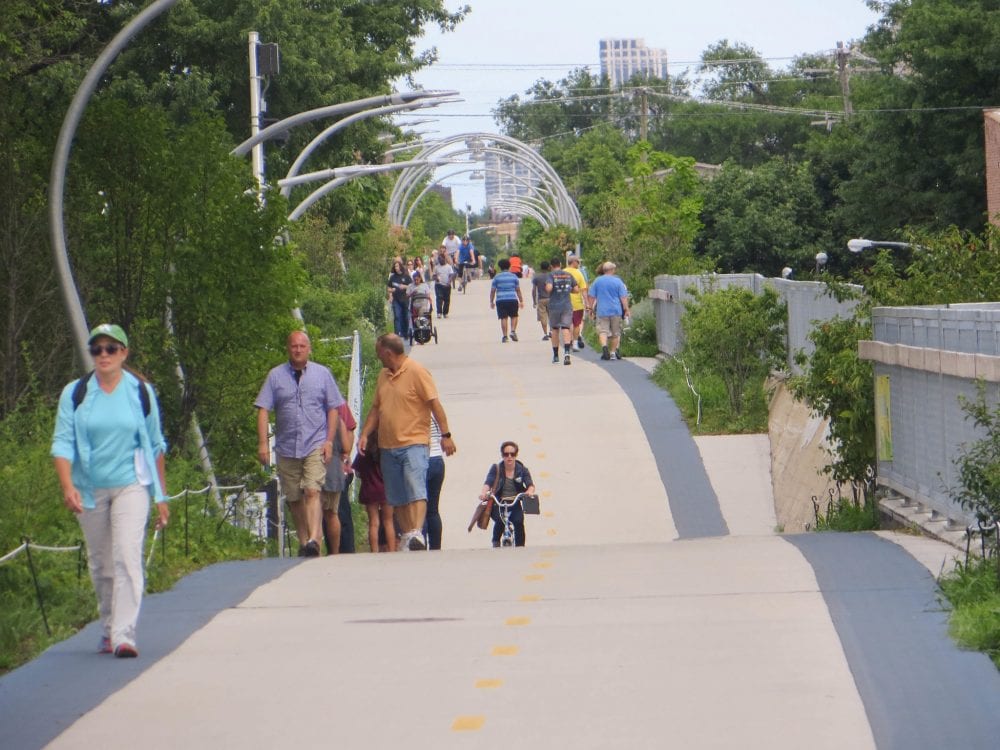
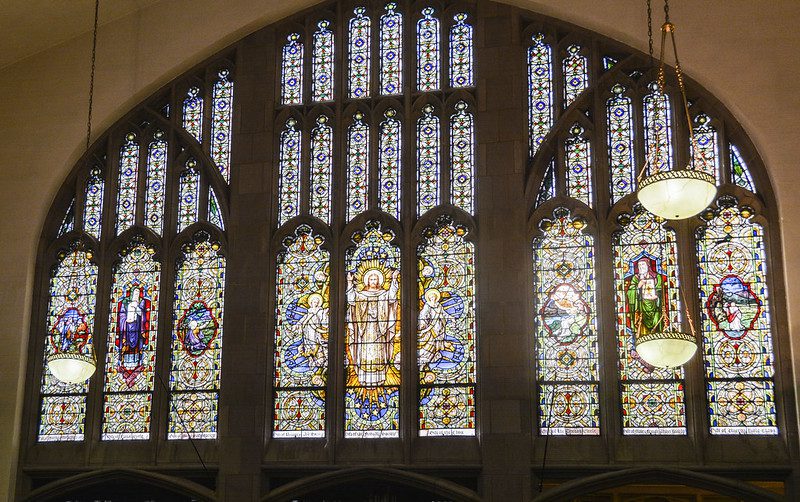
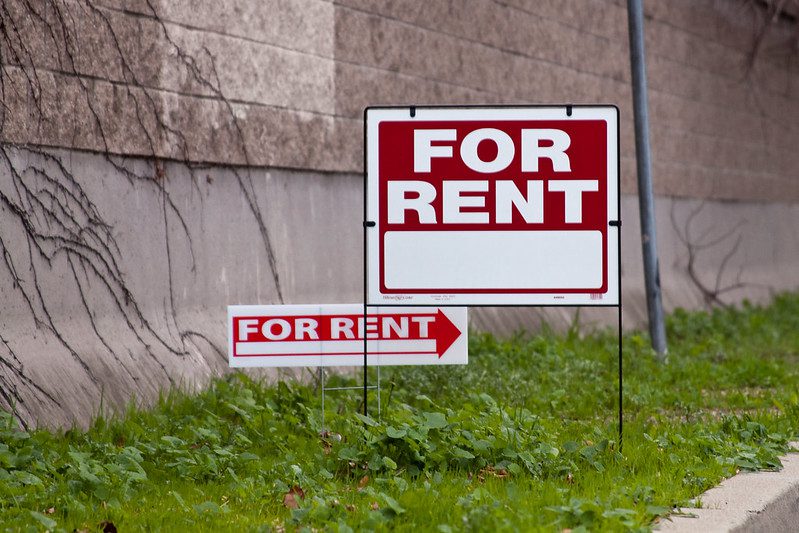

Thank you for this article. Could you please provide examples of displacement avoidance strategies? I see a lot here about creating awareness and partnerships, which is important, but it is unclear what the ideas are for actually improving investment while limiting displacement.
The hyperlink above will take you to the full policy with more detailed language, additionally we well be publishing a more comprehensive tool kit and implementation guide next month that we’re happy to share with you and the broader Shelterforce community. However it is important to create meaningful partnerships because if for example, a tenant needs assistance in an eviction case, a local park manager can provide referrals or even help organize a legal clinic with a tenants rights organization.
Thank you Sissy, I appreciate the work you are doing and for sharing it with all of us so that we can learn from and apply these lessons locally.
(1) Street vendors are not going through the legal process of obtaining the required permits; additionally, the article the author cites explains that many of the street vendors violated the Covid-19 shutdown orders. The author should be placing the blame on the progressive politicians who made these rules.There is no need to create a deeper entrenchment of politicians to handle “affordable housing” (a misnomer, by the way) as proposed by the author.
(2) Why does the author use the term “Latinx” to refer to Hispanics when less than 4% of Hispanics self-identify as “Latinx”? See: https://www.pewresearch.org/hispanic/2020/08/11/about-one-in-four-u-s-hispanics-have-heard-of-latinx-but-just-3-use-it/